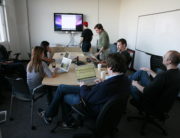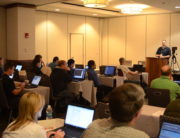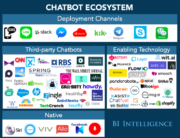With the rise of the contingent workforce as a viable staffing strategy, you have to deal with a brand new challenge – management.
While contingent workforce management is similar to managing your full-time staff, it is unique in many ways. Namely, your staff could be all over the world.
The key to making this type of staffing work well for your business is learning how to manage them effectively.
Make Communication Easy
With only 42% of businesses still being mainly salaried employees, it’s easy to see the increasing popularity of alternative work arrangements, including contingent. The easiest way to better manage this changing workforce is by improving communication.
Whether these employees work inside your business or remotely, you need a centralized way for everyone to communicate. Using collaboration tools ensures your salaried staff and contingent staff communicate with each other. This also allows management to keep track of all communications and productivity.
Another communication issue to keep in mind is having regular meetings with your contingent staff. This allows you to stay on top of what’s going on, listen to any issues they may be having and address any problems.
Study Performance
Just because a contingent workforce helps you fill staffing gaps, it doesn’t mean you don’t need to monitor their performance. They may be skilled, but you can still have the same issues as you would with any other employee. This means you need to consistently track performance to ensure they’re living up to your business’s expectations.
Study the performance of your entire workforce to see where your strengths and weaknesses lie. You may find you need more, fewer or simply replacements to fully supplement your current full-time staff. Putting together the right team is crucial to better management.
Use Technology To Track
Technology is your best friend when it comes to contingent workforce management. It also makes measuring performance much easier. Use tracking tools to stay on top of time worked, time spent within specific systems/apps and other time management aspects. You can also use other types of tools to track how well contingent workers interact with your staff and clients, such as how often they use communication tools and feedback from employees/clients.
The good thing is you can use the same system to keep better track of your salaried employees to learn where any staffing weaknesses may lie.
Stay On Top Of Payroll
Naturally, your workers want to get paid, but if you have a large number of contingent employees, this can get complicated. It’s even harder when you have workers throughout the world with various payroll rules and regulations.
And, not so ironically, a company employing contingent staffing is well-suited to outsource the payroll of that contingent staffing.
In this case, as a company, you have couple options:
- Require the staffing firm to handle payroll.
- Or, hire a payroll company to pay the pre-identified talent.
It should be noted, in the case of high-performance consultants—those that usually work on 1099—your company must engage a 1099 compliance partner for payroll purposes.
Treat Them As Part Of Your Team
It’s easy to think of outside workers as just that – outside of your business. However, they’re a vital part of helping your business run smoothly and grow. That’s why a large part of contingent workforce management is making these employees feel welcome. Not only does it make them happier and 12% more productive, but it helps your salaried or full-time staff accept them more too.
As with any new staff, these workers want to feel like they’re a part of the team. Creating a welcoming culture and team environment also helps you to attract and retain top talent.
Centralize Information
Centralizing information isn’t just good for contingent workforce management, but overall management. When you have employee data and communications scattered among numerous systems, it becomes a nightmare to keep track of. Instead, centralize information as much as possible.
This helps you to get a clear overview of every employee, team and department. It also makes it easier for not only management, but your entire workforce (contingent and otherwise) to work together effectively.
Need help in managing your contingent workforce? Contact us today to make management easier.
Image: Icons8 Team
















